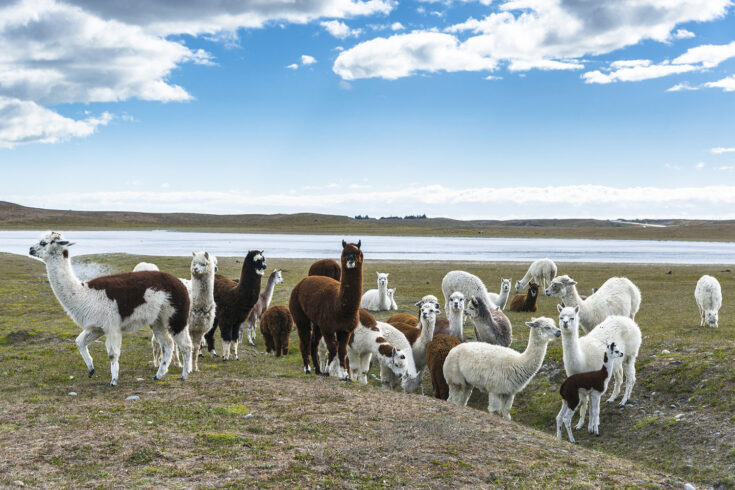A unique antibody produced by llamas could be developed as a new frontline treatment for COVID-19 and could be taken by patients as a simple nasal spray.
The laboratory research is led by scientists at the Rosalind Franklin Institute. The research was funded by:
- Medical Research Council (MRC)
- Engineering and Physical Sciences Research Council (EPSRC)
- EPA Cephalosporin Fund
- Wellcome.
Using nanobodies to block the virus
Llamas, camels and alpacas naturally produce quantities of small antibodies with a simpler structure that can be turned into nanobodies.
The team engineered new nanobodies using a collection of antibodies taken from llama blood cells. They showed that the nanobodies bind tightly to the spike protein of the SARS-CoV-2 virus, blocking it from entering human cells and stopping infection.
The short chain molecules can be produced in large quantities in the laboratory and can be administered nasally or by injection.
They could ultimately provide a cheaper and easier to use alternative to human antibodies taken from patients who have recovered from COVID-19.
It is the first step towards developing a new type of treatment against COVID-19.
Fifi the llama’s contribution
The team was able to generate nanobodies by injecting a portion of the SARS-CoV-2 spike protein into a llama called Fifi, who is part of the antibody production facility at the University of Reading.
Although the injections did not make Fifi sick, they triggered her immune system to fight off the virus protein by generating nanobodies.
A blood sample was then taken from Fifi and the researchers were able to purify four nanobodies capable of binding to the COVID-19 virus.
The nanobodies were combined into chains of three to increase their ability to bind to the virus. These were then produced in cells in the laboratory.
A breakthrough in 12 weeks
This stage of work leads on from when the team decided to focus their efforts on COVID-19 in the early stages of the pandemic.
Within 12 weeks the team showed that the antibodies could neutralise the virus. They used advanced imaging at Diamond Light Source, the UK’s national synchrotron.
Examining the nanobody structure
Professor James Naismith, Director of the Rosalind Franklin Institute, helped lead the research. He said:
Because we can see every atom of the nanobody bound to the spike, we understand what makes these agents so special.
Effective against variants
The team found three nanobody chains were able to neutralise both the original variants of the COVID-19 virus and the Alpha variant that was first identified in Kent, UK.
A fourth nanobody chain was able to neutralise the Beta variant first identified in South Africa.
A new treatment for COVID-19
Dr Andrew Bourne, Director of Partnerships at EPSRC, said:
Utilising the unique properties of llamas’ nanobodies, this research could lead to an important new form of treatment for COVID-19 that is cheaper to produce and easier to administer.
It is a vivid illustration of the impact that long-term discovery research at the cutting edge of physical and life sciences can have, as undertaken at the Rosalind Franklin Institute, which has been further accelerated through UK Research Innovation agile funding.
Last updated: 21 January 2022

